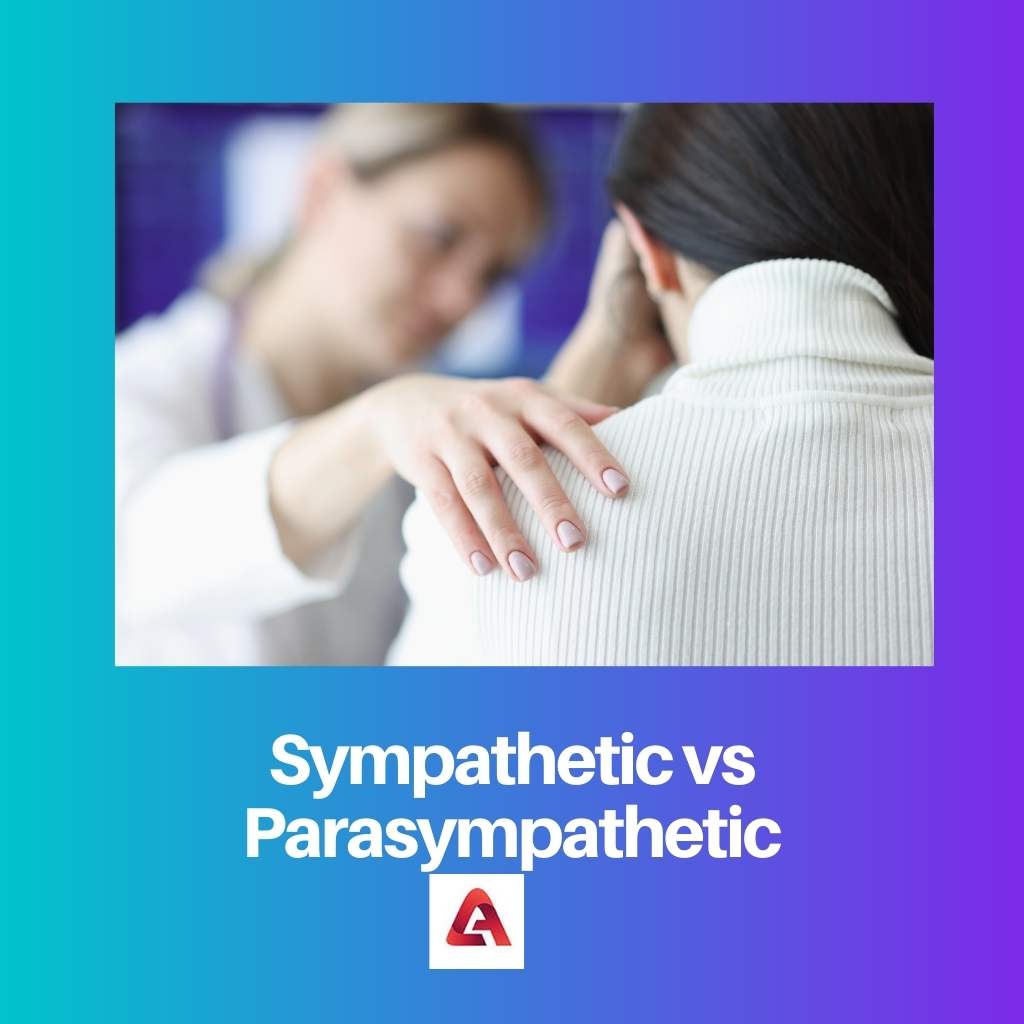These form the crux of the autonomic nervous system of the human body. As the name itself suggests, both these processes are tasked with maintaining or guarding homeostasis.
This, in a simple sense, controls the body’s internal environment and several critical life processes such as digestion, body temperature, urination, defecation, heart rate, breathing, etc.
Key Takeaways
- The sympathetic nervous system prepares the body for action by initiating the fight-or-flight response, increasing heart rate and blood flow to muscles.
- The parasympathetic nervous system promotes relaxation and recovery by slowing the heart rate and conserving energy.
- Both systems work together to maintain homeostasis, ensuring a balanced response to external and internal stimuli.
Sympathetic vs Parasympathetic
The sympathetic and parasympathetic nervous systems are autonomic nervous system branches that manage involuntary physiological activities. The sympathetic nervous system prepares the body for “fight or flight” responses. The parasympathetic nervous system encourages “rest and digest” responses, which aid in energy conservation and restoration.

The sympathetic system of nerves forms one-half of the autonomic nervous system (ANS) present in the human anatomy.
The sympathetic process is responsible for dealing with the body’s response to any threat that may occur or be perceived to occur. It, therefore, holds the power to trigger the fight or flight aspect of the person’s behaviour.
The parasympathetic system of nerves forms the other half of the autonomic nervous system present in the human anatomy.
The parasympathetic process is tasked with homeostasis and looks over critical body processes such as resting, digesting, feeding and breeding. Put, it controls the processes taking place in a human body while it is at rest.
Comparison Table
| Parameters of Comparison | Sympathetic | Parasympathetic |
|---|---|---|
| Definition | Forms half of ANS; responsible for flight or fight reaction. | Another half of ANS; controls and regulates body processes while at rest. |
| Located in | The thoracic and lumbar regions of the spinal cord | The Sacral region of the spinal cord, medulla, and cranial nerves |
| Triggered | It is triggered when perceives a potential danger | When the body is overworked and is at rest |
| Symptoms | Results in enhanced alertness, other body functions close down | Creates an opposite effect; that shapes the body to a state of calm. |
| Adrenaline | Body emits adrenaline | No adrenaline content secreted |
What is Sympathetic?
The sympathetic autonomous nervous system plays a vital role in the human body’s survival.
It forms one-half of the ANS present in the human anatomy. The sympathetic process is responsible for dealing with the body’s response to any threat that may occur or be perceived to occur.
It, therefore, holds the power to trigger the fight or flight aspect of the person’s behaviour. This major sensory reaction shapes several instances of an individual’s life.
This sympathetic system of nerves is located near the lumbar and thoracic regions of the person’s spinal cord. It contains short neurons that are needed to help make a fast system.
Several visible and noticeable changes occur when this process is triggered. The human body gains an overall alert stage and releases adrenaline.
The person’s body speeds and tenses up, muscles contract, pupils dilate, production of saliva slows down, and the body automatically produces increased energy by converting glycogen to glucose.
All other body functions that can potentially slow down movement are shut down for the time being.
The human body prepares itself to choose an option to either stay and fight or forget and choose the alternative; flight. This approach can vary between individuals based on their characteristics and the situation.
What is Parasympathetic?
The parasympathetic system of nerves forms the other half of the autonomic nervous system present in the human anatomy.
The counterpart to sympathetic processes, the parasympathetic process is tasked with homeostasis and looks over critical body processes such as resting, digesting, feeding and breeding.
Homeostasis refers to the process that helps self-regulate a human body to attain stability. Put simply; it controls the processes taking place in a human body while it is at rest.
The system forming parasympathetic responses resides in the spinal cord, medulla, and cranial nerve sacral region.
Due to their relaxed responsibilities, PNS have longer pathways and overall slower working of the system.
These help the human body to counterbalance, helping one to reach a level of calm or peace.
This is a vital function as it helps the overworked anatomy to regain its faculties.
It decreases the heart rate, relaxation of muscles occurs, pupils constrict, and there’s an increase in urinary output, stomach movement, and secretion.
It helps stop overworking and resultant exhaustion and restores calm. The processes are automatic.
No adrenaline is generated, saliva production is normal, and the conversion of glycogen does not happen in parasympathetic responses.
The parasympathetic response can be conceived as a leisure process where bodily functions such as resting and digesting take place.
Main Differences Between Sympathetic and Parasympathetic
- SNS forms half of ANS that is responsible for flight or fight reactions. PNS forms another half of ANS that controls and regulates body processes while at rest.
- SNS is triggered when the body perceives a potential danger. PNS occurs when the body is overworked and is at rest.
- SNS is present in the thoracic and lumbar regions of the spinal cord, while its counterpart is located in the sacral region of the spinal cord, medulla, and cranial nerves.
- SNS results in enhanced alertness while the other body functions close down. PNS creates a counterbalance that is pivotal in restoring the person’s body to a state of calm.
- There is an emission of adrenaline and conversion of glycogen during SNS. No such occurrence has been observed during PNS.



